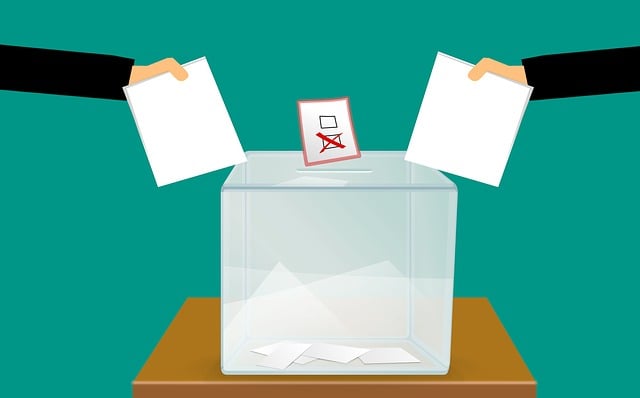TL;DR:
Before visiting the DMV, prepare all necessary documents (driver's license, insurance, vehicle registration, bill of sale, residency proof) to speed up the registration process. Schedule an appointment online in advance, arrive a few minutes early on the day of your visit, and bring required documents to avoid delays. The text also discusses urban development, emphasizing the balance between tradition and modernity, local identities, and sustainable practices for vibrant cities. After registering, receive license plates and important paperwork by mail or pick them up, keeping these documents secure for future reference.
Navigating the New Car Registration Process: A Comprehensive Guide
Purchasing a new car is an exciting step, but it’s not just about hitting the road; proper registration is crucial for legal driving. This guide aims to demystify the vehicle registration process, particularly in light of recent DMV automation efforts. By understanding the requirements and following a structured approach, you can efficiently navigate this essential task, ensuring your new car is legally registered and ready for the open road without unnecessary delays. Let’s explore the step-by-step process, from gathering documents to receiving your license plates.
- Understand Your DMV Requirements
- Gather Necessary Documents
- Schedule a Registration Appointment
- Complete Online Forms (if available)
- Visit Your Local DMV Office
- Pay Registration Fees
- Receive Your License Plate & Documents
Understand Your DMV Requirements

Before diving into the registration process, it’s crucial to familiarize yourself with your local Department of Motor Vehicles (DMV) requirements. Each state has its own set of rules and regulations regarding vehicle registration, so understanding what’s needed is key to avoiding delays. Check online for specific guidelines from your DMV, which will outline essential documents, fees, and any additional forms required for your new car.
This preparation ensures a smoother transaction when visiting the DMV, as you’ll be ready with all necessary materials. It’s also wise to verify if your state offers any electronic registration options or e-services, as these can significantly cut down on paperwork and potential wait times during peak periods.
Gather Necessary Documents

Before heading to the DMV, make sure you have all the required documents. This typically includes your driver’s license, proof of insurance, vehicle registration from the previous owner (if applicable), and a bill of sale or purchase agreement. Some states may also require additional paperwork, such as a proof of residency or identification documents with your current address. It’s essential to double-check the specific requirements for your area to avoid any delays.
Organize these documents in advance to streamline the process. Having them readily available will ensure a smoother experience at the DMV. Remember to bring along any necessary fees for registration and license plate issuance, as well. Being prepared with these essentials will help you navigate the registration process quickly and efficiently.
Schedule a Registration Appointment

Before heading to the DMV, it’s wise to schedule an appointment for vehicle registration. Many state departments of motor vehicles (DMVs) offer online scheduling, allowing you to choose a convenient time and date. This step saves you from waiting in long lines and ensures a smoother process.
On the day of your appointment, bring all necessary documents, including your vehicle’s title, proof of insurance, and identification. Arrive a few minutes early to fill out any required paperwork and provide relevant information about your vehicle, ensuring another efficient and stress-free registration experience.
Complete Online Forms (if available)

Visit Your Local DMV Office

When it comes to registering your new car, visiting your local DMV office is the first step in a series of crucial procedures. This face-to-face interaction allows you to ensure that all necessary documents are in order and facilitates any initial checks or requirements specific to your vehicle. The process can often be streamlined with online preparation, such as gathering important documents like proof of insurance, ownership transfer papers, and identification.
At the DMV, knowledgeable staff will guide you through the registration process, answering any questions and ensuring accuracy. This is also an opportunity to inquire about any local regulations or fees that might apply to your vehicle. By taking care of this step promptly, you can avoid potential delays down the line, ensuring your new car is legally registered and ready for the open road.
Pay Registration Fees

Receive Your License Plate & Documents

After submitting your registration forms at the DMV, one of the most exciting parts of the process is receiving your official license plates and important documents. These will be mailed to you or sometimes made available for pickup right after processing. Your license plates are a physical indication that your vehicle is officially registered with the state and authorized for road use.
Along with your license plates, you’ll typically get a registration certificate and other relevant paperwork. It’s crucial to review these documents carefully to ensure all the information is accurate and up-to-date. Keep these papers in a safe place, as they’re essential for future reference and proof of ownership when needed.
When purchasing a new car, navigating the vehicle registration process at your local DMV is crucial for getting on the road legally and efficiently. By understanding your requirements, gathering essential documents, scheduling an appointment (or utilizing online forms if available), visiting the DMV office, paying fees, and receiving your license plate and documents, you can ensure your new car is road-ready without unnecessary delays. Stay informed about automation and electronic services offered by DMVs to streamline the process even further.



